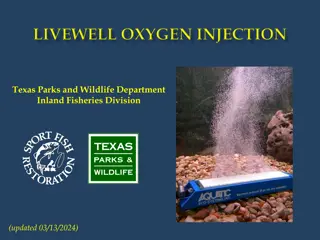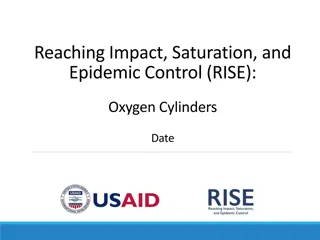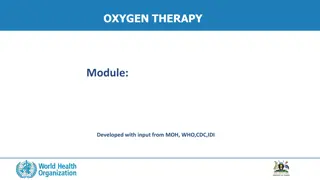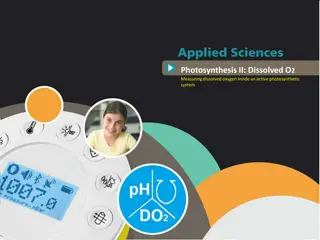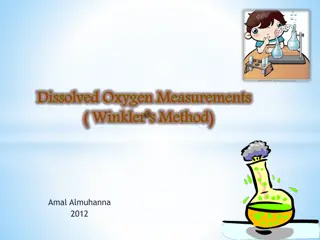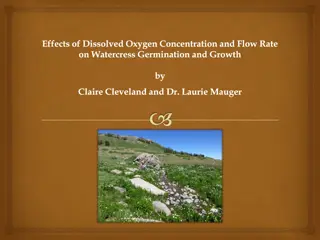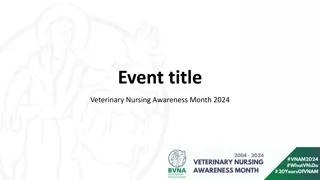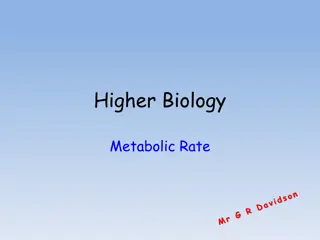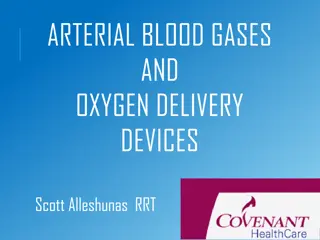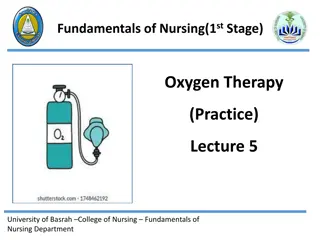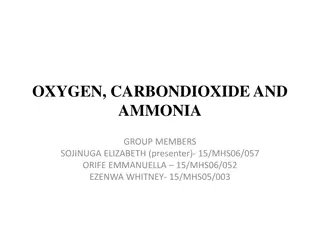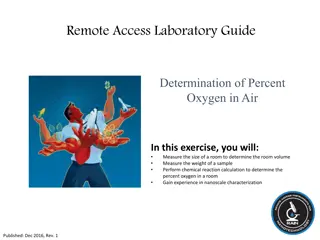Oxygen Therapy in Veterinary Practice
Oxygen therapy is a crucial intervention in veterinary medicine, especially in emergency situations to address hypoxia and increase oxygen delivery to tissues. It involves delivering high concentrations of oxygen to optimize oxygen levels in the blood. Indications for oxygen therapy include hypoxia and hypoxemia, and it should be instituted when clinical signs indicate a need for immediate supplementation. Non-invasive methods, such as flow-by oxygen, face masks, oxygen hoods, and cages, are commonly used for oxygen therapy in veterinary practice.
Download Presentation

Please find below an Image/Link to download the presentation.
The content on the website is provided AS IS for your information and personal use only. It may not be sold, licensed, or shared on other websites without obtaining consent from the author. Download presentation by click this link. If you encounter any issues during the download, it is possible that the publisher has removed the file from their server.
E N D
Presentation Transcript
OXYGEN THERAPY IN VETERINARY PRACTICE Prepared by- Dr. Sonam Bhatt Assistant Professor (Veterinary Medicine)
INTRODUCTION It is widely used in veterinary medicine Most important veterinary cares in emergency health Used to relieve hypoxia and increase oxygen delivery to the tissues. In the emergency room setting, patients presenting with symptoms of respiratory distress may benefit from oxygen supplementation until the status of their respiratory system can be determined.
denotes the delivery of high Oxygen therapy concentrations of oxygen into the respiratory system to increase the oxygen levels in the blood so that more oxygen reaches at tissues level Oxygen therapy increases the fraction of inspired oxygen (FiO2) delivered to the alveoli
INDICATIONS OF OXYGEN THERAPY Hypoxia Hypoxaemia
WHEN TO INSTITUTE OXYGEN SUPPLEMENTATION nasal flaring, pallor of mucus Clinical signs: membrane, cyanosis, panting, irregular chest wall movements etc., require immediate supplementation of oxygen Quantitatively, oxygen should be provided to any patient with saturation of oxygen (SaO2) or pulse oximetry reading (SpO2) of <93% or with an arterial partial pressure of oxygen (PaO2) of <80 mm Hg.
METHODS OF OXYGEN THERAPY Non-invasive Method Invasive Method
NON-INVASIVE METHODS OF OXYGEN THERAPY This method is readily available in most emergency clinics. Administration of ventilator support without using an invasive artificial airway (endotracheal tube or tracheostomy tube).
NON-INVASIVE METHODS OF OXYGEN THERAPY Flow-by oxygen: Delivered via a tube placed in the vicinity of the patient s nose or mouth Face mask: A face mask can be attached to an oxygen source for delivery of higher FiO2 compared to flow-by oxygen Oxygen hood/oxygen collar: An oxygen hood can be constructed using an Elizabethan collar and covering the opening 75 90% with clear plastic wrap Oxygen cage: stress-free method of oxygen supplementation.
Flow-by oxygen: Face mask Oxygen hood/collar
INVASIVE METHODSOF OXYGEN THERAPY Possible when the animal is unconscious or under anaesthesia It includes Nasal oxygen prongs: are widely used in human medicine Nasal oxygen catheters:best method among all the invasive method as it is inexpensive, technically easy to place and also well tolerated by the patient. Oxygen catheters are available in various diameters and lengths
Trans-tracheal oxygenation: This technique is used in patients intolerant to nasal oxygen delivery like patients suffering from upper airway obstruction
Nasal oxygen catheters Nasal oxygen prongs





